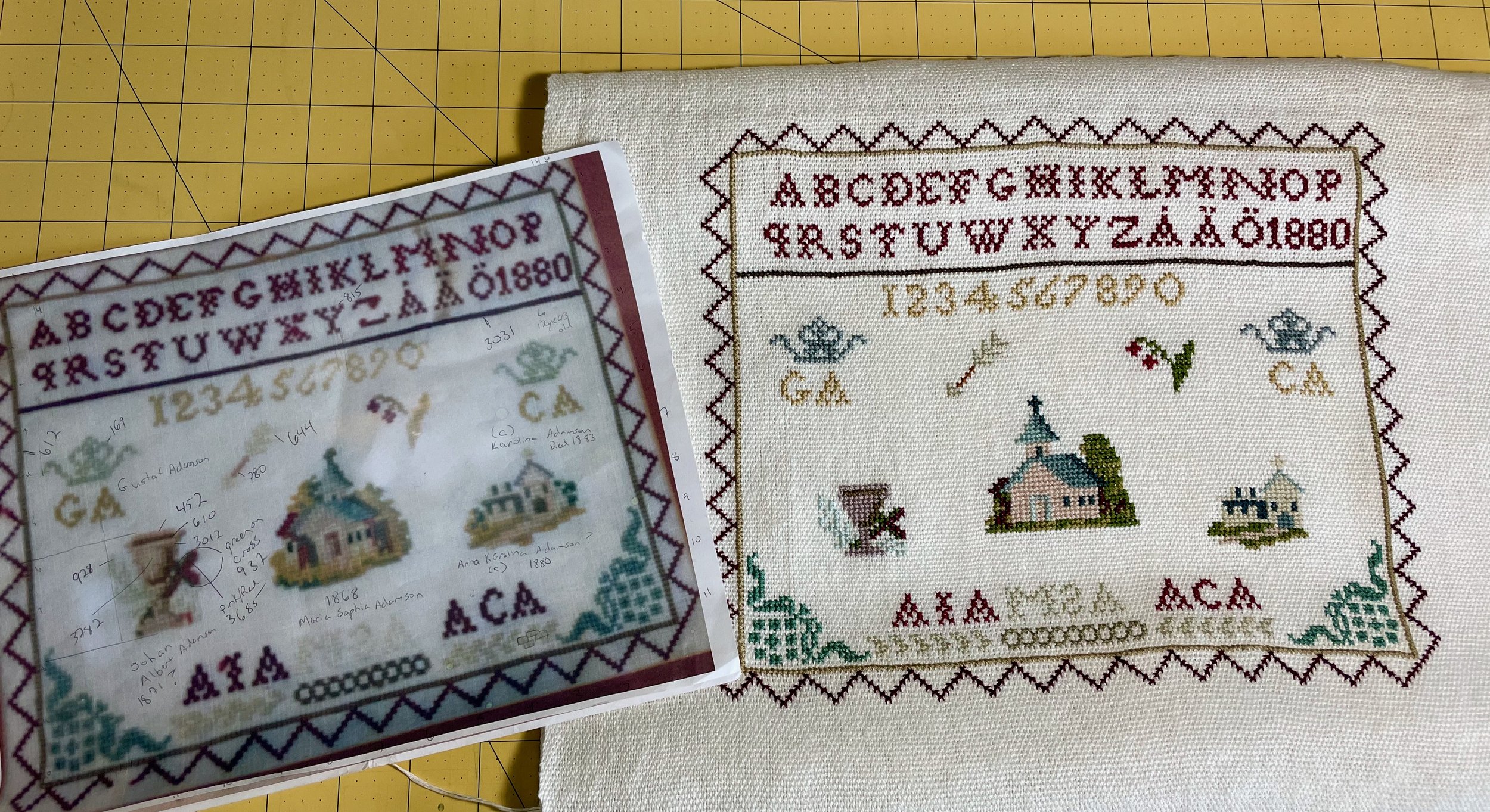“What part of Missouri are you all from?”
Mark and I were sitting in the hotel breakfast area quietly discussing plans for our new life when a very tall and surly man stopped in front of our table and asked the question without preamble. We just stared at him, frozen in place by his audacity. “I saw your cars, your plates,” he shrugged. “My kid is graduating from college, and we are moving back to Springfield. I’ve had enough of this place.” His visible displeasure turned fully into disgust when we informed him that we were moving to Minnesota. I don’t know why people are like this.
At the beginning of May, we will have been in Minnesota for a year. We survived our first winter and we thrived. The Twin Cities had the third snowiest winter on the books. The benefit of beginners’ mind is you don’t know what is unusual. We enjoyed winter and we expect to enjoy future seasons as well.
“Rag rug” sampling on the loom. Experimenting with the structure of a rug as a base for embroidery. Lots of color mixing and using scraps and random bits.
My studio work lately has been a lot of sampling and trying new things. Before I packed everything up I had some ideas that I worked on and I left those fabric samples to rediscover on the other side. I’m glad that I did that as I wasn’t starting from zero. I also had a sense that for the next year, I would sample, experiment, and see where things led me. I miss making my work and yet the work that I made before seems to have quieted within me. I have mostly gracefully allowed that to just be and to not pick at it. There are other times though where the inner quiet is interrupted by my own inner voice asking, now what? What will I make now?
I was finally able to voice what I’m thinking and searching for on a walk to our lake this week with my husband. All this time my work has been about an imagined place or places that have left imprints on memory—the places that I longed for. Now that I’ve discovered that place that I imagined, what does that mean for my work? My husband suggested that I still long for that place. I long for the place that I have. It was a subtle shift and a wise suggestion.
Early spring at the lake
The places that I long for are now here. There are many of them – some are a block away, some a thirty-minute walk away, and many I haven’t seen yet. Spring has come to the north, and while the earth is slow to wake up, the creatures here are announcing the changes. The osprey are back, we see eagles almost every day again, and my long held wish to see a loon has been granted. We have seen about six of them now. The landscape here touches the small curious child that I once was and I can’t seem to get my fill of it. No matter the season. I just love being outside here, even if only in the driveway.
Loon spotting!
In Other News
I recently had an article published on the Norwegian Textile Letter, an interview with artist, Soile Hovila. Weaving Light and Meaning: A Conversation with Artist Soile Hovila
My piece This Land recently was given Award of Excellence at the Hopkins Center for the Arts. The Spring Members Show runs until May 14, 2023.
This Land











